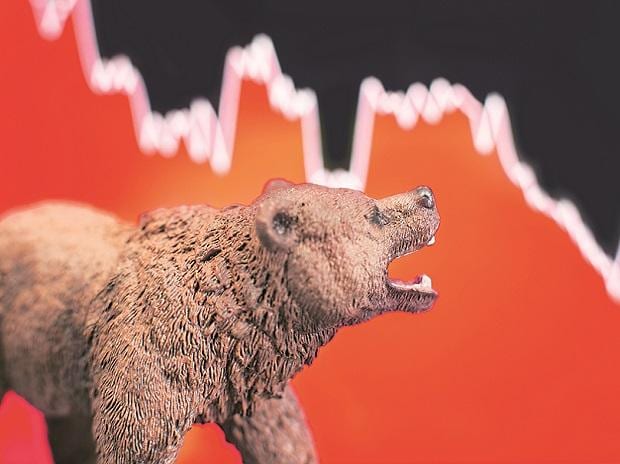[ad_1]
Bearish global sentiments along with renewed fears of Covid-19 triggered sharp selloff across domestic equities on Friday. While the S&P BSE Sensex cracked over 950 points to close below 60,000 levels, the 50-packed index crashed over 300 points to close below 17,900 levels.
Broader markets, too, bore the brunt of intense selloff and underperformed benchmark indices. Nifty MidCap 100 and Nifty SmallCap 100 indices tanked up to 4 per cent in trade.
All sectors, meanwhile, drowned in the sea of red, with Nifty Media, Nifty Metal, Nifty Realty, and Nifty PSU Bank indices declining up to 6 per cent.
However, despite the gloomy mood, analysts suggested investors to bet on high quality stocks even though a ‘Santa Claus rally’ seemed far-fetched.
“The global market backdrop continues to be weak due to the strong economic data from the US. The paradox of good economic news turning out to be bad news for markets is playing out. There is an element of overreaction in the market to the Covid news. Even though a ‘Santa Claus rally’ appears unlikely, investors can buy high quality stocks in telecom, banking and capital goods on dips,” said Dr VK Vijayakumar, Chief Investment Strategist at Geojit Financial Services.
Meanwhile, here are the top factors behind Friday’s market crash:
US data: An influx of positive data from US on consumer confidence, Q3 GDP, and unemployment claims indicated that the Federal Reserve can continue to remain hawkish in the February meeting. After 50 basis points (bps) rate hike in the December meeting, traders anticipate a slowdown to 25 bps in the next February meeting.
Data suggested rise in US consumer confidence to 108.3 in December from 101.4 last month, highest in eight months. US Q3 GDP, meanwhile, grew to 3.2 per cent from 2.9 per cent. Initial unemployment claims, on the other hand, rose to 2,16,000, showed data from the labor department.
Renewed fears of Covid-19: The resurgence in Covid-19 cases in China troubled investors and triggered turmoil across global markets. According to a recent report, China is likely experiencing 1 million infections of Covid-19 and 5,000 fatalities. Moreover, data suggested that China could undergo two peaks in mid-January and March.
However, back home, the health ministry reported 0.14 per cent decline in positivity rate on a weekly basis.
Bearish global mood: The resurgence of Covid-19 cases coupled with fears of persistent hawkish US Fed unleashed bears across global markets. On Thursday, the US equities inched lower in trade, with losses led by technology stocks. Key indices Dow Jones, the S&P 500, and NASDAQ Composite lost up to 2 per cent.
Asia-Pacific markets, too, followed similar action and edged lower in trade this morning. Nikkei 225, the S&P 200, Hang Seng, Topix, Kospi, and Shanghai Composite indices declined up to 1 per cent.
Technical factors: After more than a month, Nifty50 dropped below 18,000-mark due to prevailing grim situation across global markets. Technical charts suggest that once the supports of 18,000 levels are breached, it could weaken the bias and one can expect further slide.
“Indications are pointing towards the prevailing corrective move to extend further, with a marginal rebound in between. Meanwhile, mixed global cues will keep the volatility high,” said Ajit Mishra, VP – Technical Research, Religare Broking.
Rupee’s fall: The domestic currency fell 7 paise to provisionally close at 82.86 against the US dollar on Friday. The dollar, meanwhile, rose 0.38 per cent on Thursday after strong economic data reinforced traders belief that the US Fed may stick with their hawkish stance.
[ad_2]
Source link



